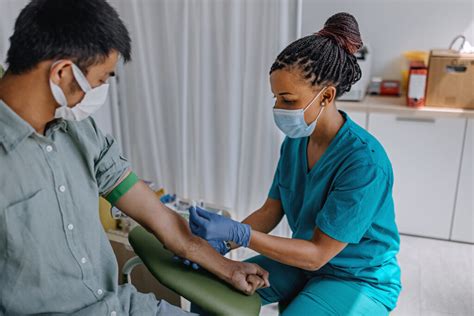What Is a Medical Assistant?
Medical assistants are healthcare professionals who perform administrative and clinical tasks in a variety of healthcare settings, including hospitals, clinics, and doctor’s offices. They are responsible for a wide range of duties, including:

- Scheduling appointments
- Maintaining medical records
- Preparing patients for examinations
- Drawing blood
- Giving injections
- Monitoring vital signs
- Assisting with minor surgeries
Medical assistants must be compassionate and have strong communication skills. They must also be able to work independently and as part of a team.
Do Medical Assistants Draw Blood?
Yes, medical assistants are trained to draw blood. This is a common task for medical assistants in a variety of healthcare settings. In fact, according to the American Association of Medical Assistants (AAMA), drawing blood is one of the most common procedures performed by medical assistants.
Why Do Medical Assistants Draw Blood?
Medical assistants draw blood for a variety of reasons, including:
- To test for blood sugar levels
- To check for anemia
- To screen for infections
- To monitor medication levels
- To diagnose diseases
How Do Medical Assistants Draw Blood?
Medical assistants draw blood using a sterile needle and syringe. They first clean the skin at the injection site with an alcohol swab. Then, they insert the needle into a vein and withdraw the blood. The blood is then placed in a vial or tube and sent to a laboratory for testing.
Risks of Blood Draws
Blood draws are generally safe procedures. However, there are some risks associated with blood draws, including:
- Pain at the injection site
- Bruising
- Infection
- Lightheadedness
- Fainting
How to Prepare for a Blood Draw
There are a few things you can do to prepare for a blood draw:
- Drink plenty of fluids before your blood draw.
- Eat a light meal before your blood draw.
- Avoid caffeine and alcohol before your blood draw.
- Tell your doctor or medical assistant if you are taking any medications.
- Tell your doctor or medical assistant if you have any bleeding disorders.
What Happens After a Blood Draw?
After your blood draw, you may experience some pain or bruising at the injection site. This is normal and should go away within a few days. You should call your doctor or medical assistant if you experience any of the following symptoms after a blood draw:
- Severe pain
- Swelling
- Redness
- Pus or drainage
- Fever
Additional Information
Medical assistants are an important part of the healthcare team. They provide valuable support to doctors and other healthcare professionals. If you are considering a career in healthcare, becoming a medical assistant is a great option.
Conclusion
Medical assistants are trained to draw blood. This is a common task for medical assistants in a variety of healthcare settings. Blood draws are generally safe procedures, but there are some risks associated with them. If you are preparing for a blood draw, there are a few things you can do to make the experience easier.
